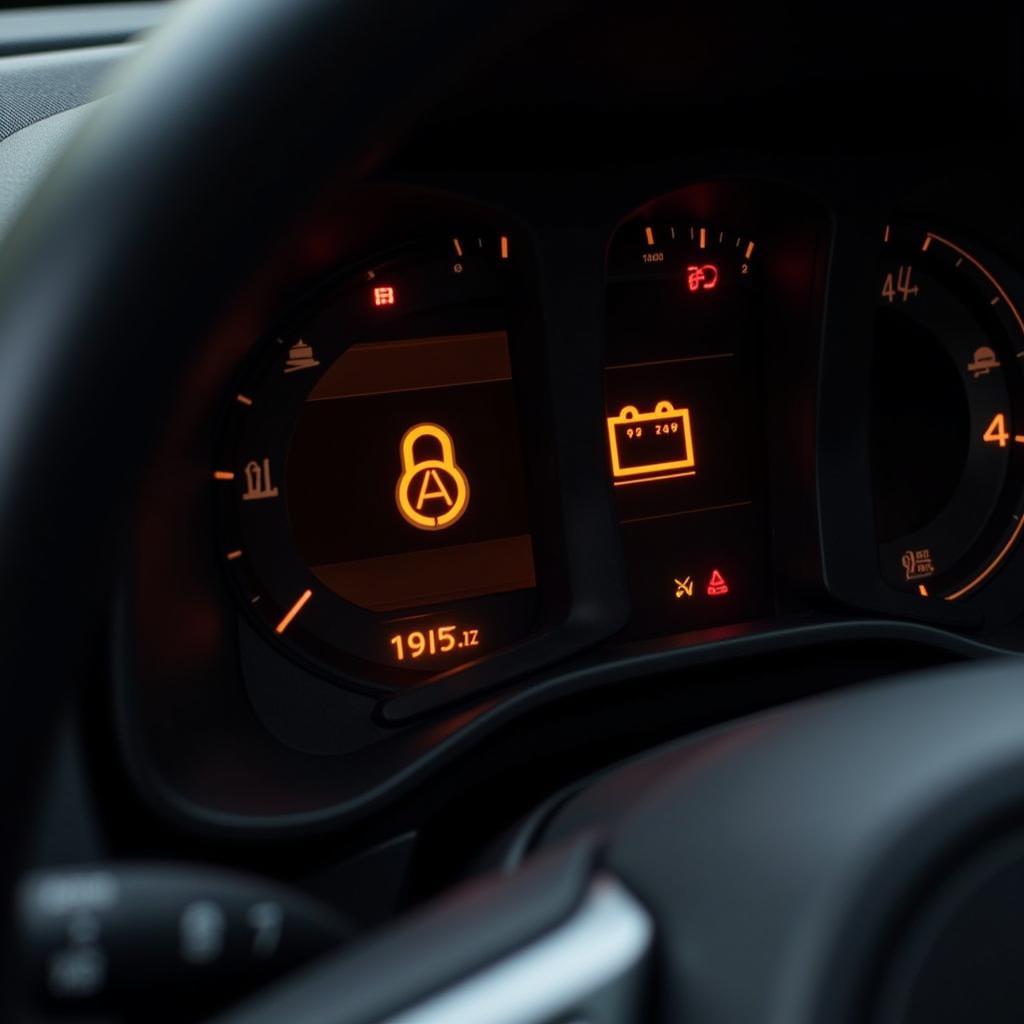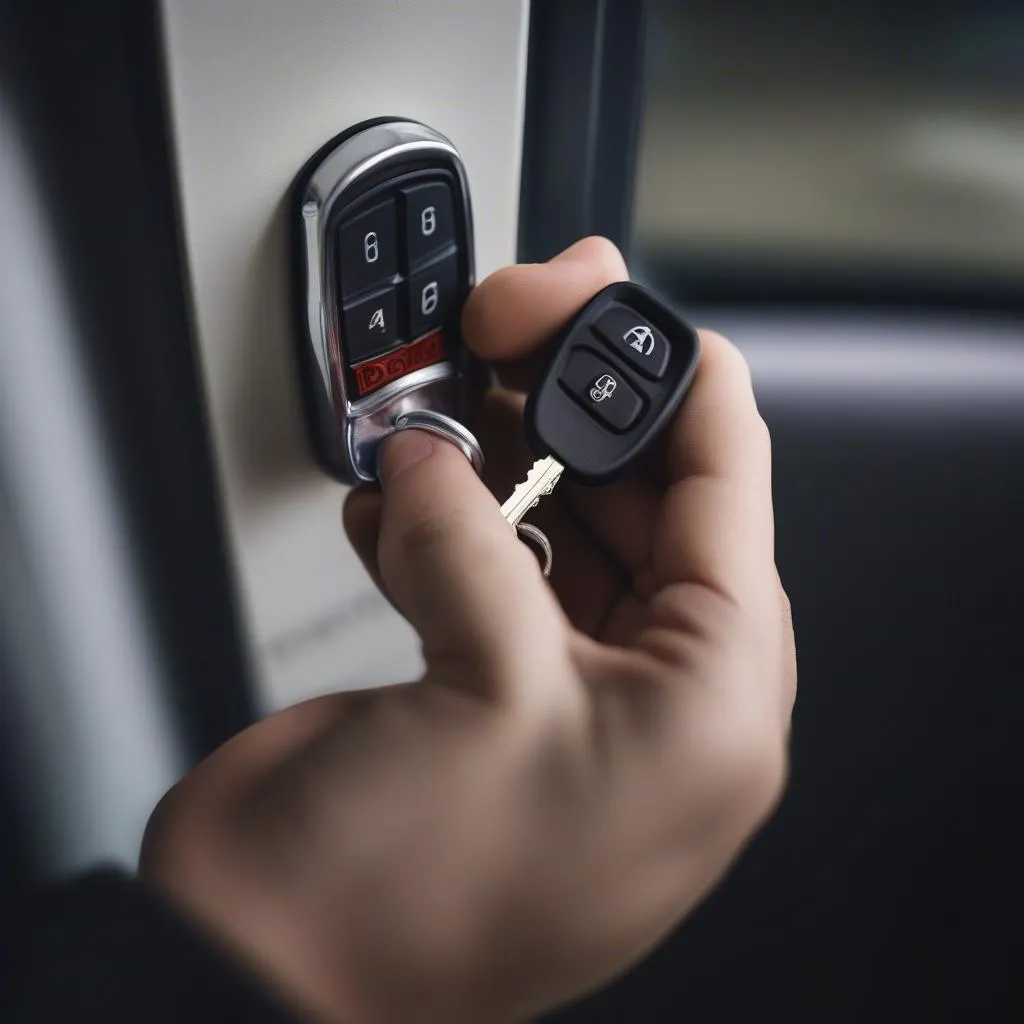Seeing both the check engine and battery light illuminated on your dashboard can be alarming. This often signals an underlying issue that requires attention. Ignoring these warnings can lead to further damage and costly repairs. This article will guide you through the potential causes and solutions when you encounter both the check engine oil and battery light on.
 Check Engine and Battery Light Illuminated on a Car Dashboard
Check Engine and Battery Light Illuminated on a Car Dashboard
Understanding the Warning Lights
The check engine light is a general indicator of a potential problem with your engine or emissions system. It can be triggered by a wide range of issues, from a loose gas cap to a serious engine malfunction. The battery light, on the other hand, specifically indicates a problem with the charging system. This could mean a failing alternator, loose battery cables, or a damaged battery. If your car won’t start with a jump, it might be related to a deeper battery or alternator issue. For more information on why your car won’t start even with a jump, see this helpful guide: car wont start even with a jump.
Why are Both Lights On Simultaneously?
Seeing both lights on can point to a few interconnected issues. A failing alternator is a common culprit. The alternator is responsible for charging the battery and powering the electrical systems while the engine is running. If it malfunctions, the battery won’t receive a charge, leading to both warning lights appearing. This can also lead to situations where your car jump starts but wont start again. Another possibility is a severe engine problem that’s draining the battery excessively.
Troubleshooting the Issue
- Check the Battery Cables: Ensure the battery terminals are clean and securely connected. Corrosion or loose connections can disrupt the charging process.
- Inspect the Alternator Belt: A broken or slipping alternator belt will prevent the alternator from functioning correctly.
- Test the Battery: A weak or dying battery can also trigger both warning lights, even if the alternator is working properly. You might encounter a situation where your car battery not recharging.
- Check the Oil Level: Low oil levels can sometimes trigger the check engine light and indirectly affect the battery’s performance.
- Scan for Diagnostic Trouble Codes (DTCs): Using an OBD-II scanner can provide specific error codes that pinpoint the problem.
What if the Car Won’t Start?
If your car wont start after jump start, it could indicate a serious issue with the battery, alternator, or starter. Do not attempt to jump-start repeatedly as this could damage the electrical system. Instead, seek professional assistance. Similarly, if your car wont start with jump, further diagnosis is needed.
“Often, when both the check engine oil and battery lights come on, it’s the alternator, but don’t rule out the battery itself or even a loose connection. A proper diagnosis is essential.” – John Smith, Automotive Electrical Engineer
Remote Diagnostics and Programming
In today’s technologically advanced automotive landscape, remote diagnostics and software installations are increasingly common. Certified technicians can diagnose your car remotely, potentially identifying the root cause of your check engine oil and battery light issue without requiring a physical visit. This can save you time and money, especially for software-related problems.
“Remote diagnostics is revolutionizing the way we approach car repairs. It allows for faster and more efficient troubleshooting, particularly with the increasingly complex electronic systems in modern vehicles.” – Sarah Jones, Automotive Software Engineer
Conclusion
When you see both the check engine oil and battery light on, don’t panic. Systematic troubleshooting, coupled with professional advice if needed, can help you identify the underlying problem and prevent further damage. Remember, early intervention can save you time, money, and potential headaches down the road.
FAQ
- Can a bad battery cause the check engine light to come on? Yes, a failing battery can cause voltage fluctuations that trigger the check engine light.
- Should I drive my car if both lights are on? It’s best to avoid driving if possible and have the issue diagnosed promptly.
- How much does it cost to replace an alternator? The cost varies depending on the make and model of your car but typically ranges from $300 to $800.
- Can I replace the alternator myself? While possible, it’s recommended to have a qualified mechanic perform this repair.
- How often should I check my battery? It’s a good idea to check your battery every few months, especially during extreme weather conditions.
- What is the lifespan of a car battery? A car battery typically lasts between three and five years.
- Can a loose gas cap trigger the check engine light? Yes, a loose or damaged gas cap can cause evaporative emissions issues that trigger the check engine light.


